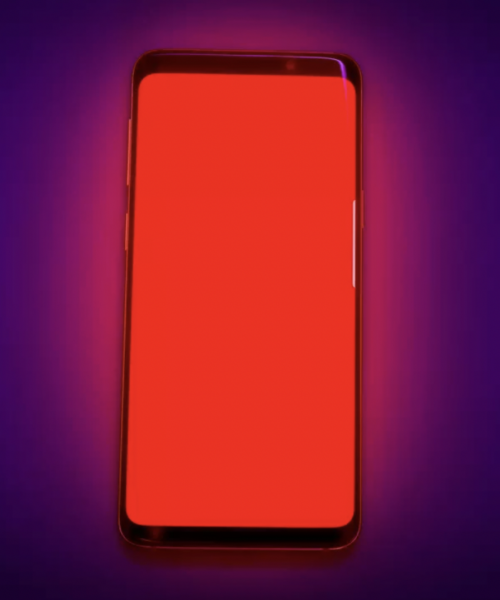Roger Cheng | CNET.Com
Troy Warren for CNT #Technology
For the 20th anniversary of the iPod, Tony Fadell, who invented Apple’s iconic music player, reminisces about its creation in an interview with CNET.
While joining Apple, the world’s most valuable company, seems like a no-brainer today, things were different back in 2001. That’s when CEO Steve Jobs demanded — not asked — that Tony Fadell join the company to create a groundbreaking device. But the man who would go on to invent the iPod initially balked at the idea.
“I was like, ‘whoa whoa,'” Fadell tells me during a Zoom interview to commemorate the 20th anniversary of the iPod on Oct. 23. “Back then to go to Apple you had to be pretty nuts.”
In early 2001 while he was developing his own MP3 player, Fadell was tapped as a consultant by Apple, who asked him to come up with different prototypes for a digital music player that would work with the company’s just announced iTunes software. He clearly made an impression on Jobs. “We’re building this, and you’re now going to join us to build it,” Fadell recalled Jobs saying.
Of course, Fadell eventually agreed and led the team that built one of the most significant products in Apple’s history — one that is still available on Apple’s site(albeit in a vastly different form). The iPod turned a company struggling with sales and a tiny sliver of the personal computer market into a consumer electronics powerhouse. It also revolutionized the digital music business, effectively destroying CDs and turning Apple’s iconic white MP3 players, and their ubiquitous white headphones, into a status symbol.
Most importantly, much of the early work on the iPod paved the road for the iPhone, Apple’s next groundbreaking product. The iPhone changed virtually everything about how we live and interact with our mobile devices and made Apple, now worth $2.42 trillion, the most valuable company in the world.
Fadell, who followed up his iPod success by founding smart home product maker Nest Labs (later acquired by Google), talked me through the “crazy” early days of development on the iPod, why he thinks it succeeded and how it somehow endured the test of time. This is his story.
Apple declined to add anything to the story.
Just a consulting gig
Fadell, 52, wore a loose-fitting olive polo shirt and a pair of AirPods Max and spoke animatedly in our video chat. The veteran of Silicon Valley, who had stints at Philips Electronics and Apple spinoff General Magic before taking on the Apple gig, recalled those early days.
When Apple executive Jon Rubinstein, who had been tasked with creating a music player, came knocking in early 2001, Fadell was already working on his own startup, Fuse Systems, with the goal of creating a mainstream MP3 player. It was a nascent market, with more than a dozen players from different companies including Creative Labs and RCA. The problem: Sales of the devices, which cost a few hundred dollars apiece, only totaled 500,000 units in 2000, according to the Consumer Electronics Association. Fuse itself faced plenty of rejection. Still, Fadell saw the Apple consulting gig as a chance to keep his own project alive.
“I’m going to go in and consult,” he said. “I’ll make some money and keep my company going.”
He spent roughly seven weeks researching different options for a digital music player, pulling research from his own company. Ultimately, he built three mockups made of Styrofoam, and used his grandfather’s fishing weights to give them the right amount of heft.
At the end of March 2001, he presented them to Steve Jobs. Apple veteran Stan Ng had worked with Fadell to prepare a stack of papers for the presentation — this was before the days of slideshows — and prepared him for both Jobs and his reputation for an explosive temper. “Those stories were ingrained in my brain, burned into my brain, so I’m going in nervous,” Fadell said.
Jobs immediately took the stack of papers, riffled through the pages and quickly tossed them aside. “Here’s what I want to do,” Fadell recalled Jobs saying, hijacking the conversation and forcing them to dive right in.
When presenting the models, Fadell did as Ng coached, showing off the worst model first, then the second and, finally, his favorite as the last option.
Jobs seized on it immediately.
“Steve picked it up and he’s like, ‘we’re building this and you’re now going to join us to build it,’ and I was like ‘whoa whoa,'” Fadell said.
It’s easy to forget that Apple jumping into this market wasn’t a sure-fire bet. The company’s sales, which came from its Mac computers, were on the decline, and Apple had posted a loss of $195 million in the prior quarter.
Fadell, who spent the past decade working on devices with “limited success,” wasn’t sure he could go through disappointment again by building an MP3 player no one would buy.
No surprise, but Jobs got his way.
‘Holy shit, is this going to work?’
After a few weeks of negotiations with Jobs, Fadell joined Apple in April 2001 and assembled a team made up of Fuze and General Magic employees to put together what would become the iPod. The project immediately faced an uphill challenge. The team needed to work with a lot of new components, including a brand new hard drive from Toshiba that Rubinstein, who oversaw the whole project, identified as the key ingredient for the iPod.
Other breakthroughs included new software for the user interface and a then-new kind of lithium ion pack, giving the device 10 hours of battery life that far exceeded anything else in the market.
They also had to figure out how to put that Toshiba drive — a (now) old-fashioned spinning-disk type, prone to damage if mishandled — into a portable device that would be shoved into pockets, dropped on the ground and thrown onto tables. On top of that, his team had to integrate Apple’s FireWire file transfer technology so people could quickly transfer their songs.
“There were a lot of ‘Holy shit, is this going to work?’ kind of moments,” he said. “We really didn’t know.”
All Fadell knew was that he had to get this thing out before Christmas 2001. That’s a tall order, considering it takes about 18 months to develop a new smartphone today. Fadell said he really got started in May — with a launch just five months later.
“It was nonstop, seven days a week,” he said.
It’s noteworthy that Fadell, and not famed Apple designer Jony Ive, came up with the design of the iPod, going back to that original pitch to Jobs. Ive was behind the iMac and MacBook redesigns. Because the next wave of Macs would embrace white and clear plastic, Fadell used the same design language and applied it to the iPod.
Along the way, Fadell saw two other projects at Apple scrapped, which fueled him to move even faster to finish (he wouldn’t comment on what those projects were). Then came the Sept. 11, 2001, attacks, freezing the nation even as he had to rally the team in that final stretch. “It was absolutely nuts.”
When Jobs unveiled the iPod at an Oct. 23 Apple event at its Town Hall amphitheater in Cupertino, California, the device wasn’t technically done, according to Fadell. The software wasn’t finished, and the company hadn’t signed off on the manufacturing plan. But Jobs gave that pre-1.0 version out to the media in attendance, along with the 20 CDs containing the music that was preloaded on the device.

After the launch, he and his team went right back to work. (Reporters who got the prerelease iPod were asked to return them a few weeks later when version 1.0 was released to the market.)
None of that stopped the iPod from garnering massive critical praise for its fresh design and innovative scroll wheel. (“Early observers thought it was a speaker,” Fadell mused.) But after the Mac faithful gobbled it up, the iPod, well, hit a sour note.
“After that, it was dead,” Fadell said.
The secret to the iPod’s success
That may have been Fadell being a bit melodramatic — Apple reportedly sold 125,000 units in that initial holiday stretch — but those sales weren’t going to turn the company around. The willingness to keep going was the critical part of a heart-to-heart conversation Fadell had with Jobs that convinced him to join the company.
Fadell asked Apple’s visionary leader if he was willing to go the distance with the iPod, not just investing in this first unit, but to commit to a family of products. Fadell had been through enough scenarios in which a company cancels the first product nine months in because it didn’t want to invest in the next one. In Fadell’s mind, it took three generations to get the ball rolling.
“A lot of people stop midway through the journey, and I wanted to make sure we weren’t going to do that,” he said.
Jobs told Fadell he was going to throw marketing dollars at the iPod, pulling resources from its core Mac business. And even though sales of the original iPod and the follow-up version didn’t light any fires, Jobs followed through.
“He held up his side of the business, and the rest is history,” he said.
It wasn’t until the iPod hit its third generation in 2003, complete with a sleek redesign, that it began to take off as a mass market phenomenon. Fadell said he and Jobs continually pushed each other to take each version further, and he noted that Apple had become the largest consumer of NAND flash memory when the iPod Nano came out.
“We had this cycle, this heartbeat, every 12 months,” he said. “We took some really big risks to hit it again and again. We weren’t playing it safe. We never rested on our laurels.”

The iPod also got another boost in April 2003, when Apple launched the iTunes Music Store, giving people a way to buy music from a catalog of 200,000 digital songs rather than having to rip their own CDs.
There had been other digital music players before, but the iPod changed everything. It not only legitimized the category, it absolutely dominated it with more than 80% of the market. Along the way, Apple showed off its marketing prowess and created iconic ads (remember the iPod silhouette commercials?) to pitch the music and its player. Jobs also paired up with rock band U2 in 2004 on a special-edition, black and red version of the iPod with Bono and The Edgeon hand for the introduction.
By 2007, a little more than five years after that original launch, Apple sold its 100 millionth iPod. The business peaked in 2008 with sales of 54.8 million units, according to Statista. Fadell was involved with 18 iterations of the iPod.
By 2005, Fadell said Apple was already looking at the competitive threat of cellphones, which started packing in music players and cameras. His team played with prototypes that included a full-screen iPod with a virtual click wheel and that essentially combined an iPod Classic and its wheel with a phone. The Mac team had separately built a massive capacitive touchscreen the size of a pingpong table. Fadell said a mashup of all three eventually led to the iPhone, which was introduced in 2007.
And Apple changed the world of technology again.
Time machine
Apple still sells an iPod — a $199 iPod Touch that looks more like an iPhonethan that original music player — which stands as a testament to its longevity.
Fadell, who had a hand in both the iPod Touch and the first three generations of the iPhone, left Apple in 2008, and in 2010 started Nest, which four years later he sold to Google for $3.2 billion. Today, he serves as principal at Future Shape, an advisory and investment firm that works with engineers on different facets of technology.

Fadell occasionally goes back to his old iPod. It’s loaded with ’90s and early 2000s alternative music, songs from the Seattle grunge scene, and The White Stripes, who hail from his hometown of Detroit and broke out around that time.
Fittingly, it’s a sort of monument to that crazy stretch when he and his team scrambled to build a product that was largely intended to serve the iTunes software, but ended up revolutionizing a market and supercharging Apple’s place in the tech world.
“It’s a window of time of my music library, and so you leave it that way,” he said. “You kind of jack in and you’re like, ‘I’m just right back to early 2000s music.’ It’s kind of like a really great mixtape.”
In Other NEWS



































